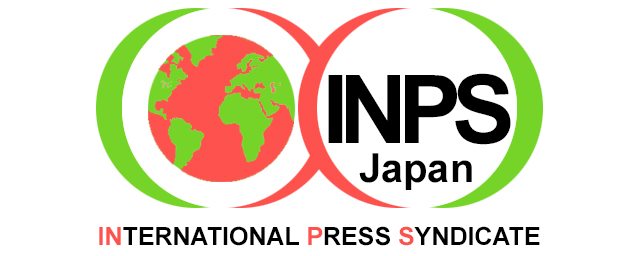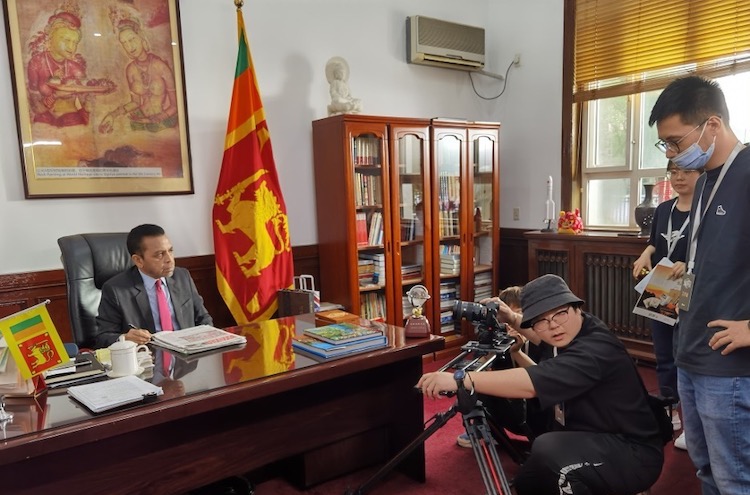Viewpoint by Ambassador Palitha Kohona*
BEIJING (IDN) — Sitting in the middle of the Indian Ocean at the southern tip of India, Sri Lanka occupies an enviable strategic position. A blessing that it has successfully leveraged to advantage in the past and a curse that will continue to attract the rapacious attention of global and regional powers seeking to dominate the Indian Ocean region strategically, economically and culturally.
With China, the Kingdom of Lanka and modern-day Sri Lanka, has maintained a close relationship spanning two millennia. Despite constant contacts over this long period, there is no record of China ever attempting to establish a permanent presence in the country or colonise it despite Sri Lanka’s obvious strategic attraction, natural wealth and congenial living conditions.
Buddhism was the main link between the two countries and contacts with Buddhist visitors constitute the earliest cultural exchanges between them and a trusting comfort level developed which persists to this day. Records indicate that the interchanges along the Maritime Silk Road, had begun to flourish around 207 BC, from the time of the Han Dynasty in China.
The writings of the fifth century scholar monk Fa Xian from Shanxi, China, who spent two years at the famous Abhayagiriya Monastery in the ancient capital Anuradhapura, tell a tale of complex international diplomatic and trading relations.
After spending almost 10 years in Northern India, he came to Lanka in 410 AD. On his return, he carried a shipload of religious texts, written in Sinhala, from Lanka to China which he later translated to Chinese. Later, monk Amoghavajra, traveled to Sri Lanka and was responsible for translating the Karandamudra Sutra into Chinese.
The Chinese traders and Shaolin monks probably introduced Chinese martial arts to Lanka as well. One of the terms in Sinhala for martial arts is Cheena – Adi. This is too much of a coincidence.
Even today the Shaolin Temple in Dengfeng County, Henan Province, maintains close religious links with the main Sri Lankan temples. During a recent visit, the Chief Abbot, Venerable Master Shi Yongxin, the 30th generation abbot of the Shaolin Temple, entertained me to tea and spoke fondly of a recent visit to Sri Lanka. The Chinese account, “The Biography of Bhikkunis” written in the sixth century details a visit by a delegation of Sinhala nuns to the imperial capital, Nanjing, to introduce the Order of Nuns to China.
The Order of Nuns still survives in China. Thirteen embassies were sent by the Kings of Lanka between 131 AD and 989 AD to the Chinese imperial court. In 428 AD, King Mahanama sent a model of the shrine of the Sacred Tooth Relic to the Chinese Emperor.
The Lankan King also sent an embassy with a valuable Buddha statue to the court of Emperor Xiaowu. A piece of the parietal (skull) bone of the Buddha, which apparently was brought over from Lanka in the 10th century, is exhibited today at the Usnisa Palace in Nanjing.
The Arab geographer Edrisi details the extent of Lanka’s international trade during the time of Parakramabahu the Great who also sent a royal princess to the court of the Emperor. The great Kublai Khan dispatched Marco Polo in 1284, seeking the alms bowl of the Buddha, which was venerated by the Sinhala people, but the Lankan king politely refused this request.
Marco Polo visited the island twice and proclaimed Lanka to be the finest island of its size in the entire world. The lion statues at Yapauwa, the capital of Lanka in the 13th century, are very much Chinese influenced. King Parakramabahu VI (1412-1467) alone dispatched six missions to China, one of the highest by a single Sinhala King.
The troves of Chinese coins and porcelain being recovered from various parts of the country suggest a thriving trade between China and Lanka. A large number of Chinese vessels lie beneath our waters, having sunk in rough weather. According to tradition, The White Horse Temple, in Luoyang, Henan, is the first Buddhist temple to be built in China.
The White Horse Temple has allocated land for the construction of a Sri Lankan style temple. Plans are being developed for this purpose. Already there are temples constructed by other Asian Buddhist countries on its large compound.
Admiral Zheng He visited Lanka six times between 1405 to 1433 during his voyages to the West representing the Ming Emperor. During his second visit to Lanka in 141, Zheng He visited the ‘Upulwan Devalaya’ in Devundara and made a substantial offerings.
The Admiral’s involvement in the replacement of the Lankan king with Parakramabahu VI who was later ousted by Parakramabahu VII are well recorded. Zheng He left a carved stone pillar in Galle in 1411. A Lankan prince accompanied Zheng He on his return, and he opted to stay in China. The family of Xu-Shi Yin’e living in Quanzhou, Fujian, traces its roots to this Lankan royal.
It is clear that Sri Lanka, had developed thriving relations, religious, trading and social, with the Middle Kingdom, and the writings of scholars, sailors, monks, travelers and traders suggest a strong Chinese religious and cultural interest in Lanka from ancient times.
More recently, many Chinese migrated to other countries in search of a better life. China was going through what is now referred as the “century of humiliation”. Some came to Ceylon (Sri Lanka), assimilated and became part of the Sri Lankan Chinese community. Some have migrated again to places such as Australia. Sri Lankan born Jimmy Shu is now a celebrated chef in Australia.
This year (2022) we celebrate the 70th anniversary of concluding the ground-breaking Rubber- Rice Agreement with China and the 65th anniversary of establishing diplomatic relations.
In 1950, independent Ceylon, asserting itself as a sovereign nation, became the 13th country to recognise the young People’s Republic of China and, since then, has unconditionally endorsed the One China Policy.
Subsequently, in 1952, Ceylon (at the time not a member of the UN) running a huge risk of a Western backlash, breached an embargo on the export of strategic materials to China and concluded the Rubber-Rice Pact with China to swap rubber (listed as a strategic material) for rice. China was embroiled in the Korean war at the time.
Ceylon agreed to export 50,000 tons of rubber to China at a higher than market price and import 270,000 tons of rice at the prevailing market price. The agreement lasted till 1982. Ceylon was also a noisy advocate of the People’s Republic of China’s resumption of its legitimate seat at the UN.
Laying the foundation for close bilateral relations, Premier Zhou En Lai visited Sri Lanka in 1957 on the formal establishment of diplomatic relations. Relations flourished, particularly during the stewardship of Prime Minister Mrs Sirimavo Bandaranaike who visited China in 1961 and again in 1972. When Chairman Mao died in 1976, highlighting the close ties between the two countries, Sri Lanka declared eight days of mourning.
The Bandaranaike Memorial Conference Centre, gifted by China, still serves as the major convention venue in Colombo. The Chinese Cultural Center, located in the Bandaranaike Memorial International Conference Centre, was inaugurated during the visit of President Xi Jinping in 2014.
This center in Sri Lanka is the first overseas Chinese cultural center. Close links are being maintained between Sri Lankan Buddhist temples and leading Chinese Buddhist temples such as the White Horse, the Shaolin and the Guanyin in Henan and the Lingguang and Yonghe Temples in Beijing. Almost every Sri Lankan head of state has visited China since the establishment of the Republic in 1972.
Many senior Chinese officials say that Chairman Deng Xiaoping who led China from December 1978 to November 1989, sent a delegation to Sri Lanka to study the Greater Colombo Economic Commission before creating the spectacularly successful Shenzhen Special Economic Zone which set the tone for China’s amazing economic resurgence.
During Sri Lanka’s conflict with the terrorist LTTE, China provided arms and other assistance unconditionally while Western countries withheld arms supplies to exert pressure on the government to stop its military advance on the LTTE. China’s steadfast support contributed substantially to defeating the LTTE and eliminating the terrorist scourge.
China also provided unqualified support to Sri Lanka at global fora, including at the UN Human Rights Council and the UN in New York. Subsequently, as the country sought desperately to recover and reconstruct and only dribbles of Western assistance was available, an economically resurgent China contributed magnificently to Sri Lanka’s recovery efforts.
The Hambantota Harbour, the Mattala Airport, the highways, the Colombo Port City, and the Lotus Pond Performing Arts Centre in Colombo resulted. The Lotus Tower bears testimony to relationship that blossomed during this period. The architecture of the building is inspired by the 12th century lotus pond in Polonnaruwa. The Lotus Tower’s design is said to be inspired by the Lotus Sutra.
A Confucius Institute has been established at the University of Colombo mainly to disseminate the Chinese language and culture. Many Chinese students have begun to follow courses at Sri Lankan universities.
The National Administration of Press and Publication of China has proposed the translation and publication of the classics of both countries into Chinese and Sinhala. Currently, a proposal is being discussed to shoot a feature film highlighting the bilateral relationship and promoting tourism.
Sister city links have been established between Colombo and Chengdu, Colombo and Shanghai and Kandy and Qingdao. Other inter-city and inter province links are being explored at the moment.
Much speculation persists about a Chinese debt trap that has ensnared Sri Lanka. Simply put, China owns less than 10% of Sri Lanka’s external debt and it was Sri Lanka which sought funding from China for its infrastructure projects after its approaches to traditional sources were rebuffed.
Recently, Sri Lanka was also placed in a difficult situation as some expressed concerns about the port call of a Chinese scientific vessel. Consistent with its longstanding practice relating to port visits and its sovereign rights, Sri Lanka permitted the vessel to use the Hambantota Port.
The world watched in nervous amazement, as China mobilized its resources, medical facilities and its technological powers, along with its population to counter Covid 19 in the early days. It brought the dreaded virus under control, starting with Wuhan.
China contributed extensively to counter the pandemic in other countries and sent approximately 2 billion doses of vaccine to them, including 200 million as gifts. It has also advocated that the vaccines be made a public good devoid of proprietary rights constraints. Sri Lanka was given 26 million, including a gift of 3 million doses. Sri Lanka has been able to manage the epidemic substantially and even open the country to tourists, largely due to the generosity of China.
At a time when traditional suppliers of vaccines to Sri Lanka did not or could not supply our vaccine requirements, while some even resorted to hoarding vaccines, China came to Sri Lanka’s aid. This was a remarkable act of solidarity and cooperation by China and the Chinese people.
Over 2,000 Sri Lankan students were pursuing higher studies in China, including military personnel. Today almost all of them have returned to resume their studies in China after the pandemic. China is today at the cutting edge of technology development, in agriculture and manufacturing.
Contrary to the oft expressed fears of the 1970s and 80s, China has succeeded in producing enough food for itself and even exports some through the impressive modernization of its agriculture. China’s high speed train network is the envy of the world. Impressive highways criss-cross this vast country.
China has developed advanced manufacturing capabilities and today it is the major exporter of manufactured goods in the world. Although still dependent on imported fossil fuels, it is also a leader in solar and wind power technology as well as a front runner in nuclear and hydrogen power development. (China produces 70% of the solar panels in the world). AI is becoming a major part of day-to-day life in China.
Sri Lankan students stand to gain much from accessing Chinese education facilities which cost much less than Western institutions. Many provinces of China have expressed interest in permitting more Sri Lankans to study in their cutting-edge establishments of higher learning.
This will certainly be an excellent opportunity to further develop people to people contacts and mutual understanding. China has developed so rapidly in the last four decades that many outside have little understanding of modern China and student exchanges would be a useful way to encourage this awareness.
Sri Lanka, long been considered a tourist Mecca, is expected to rely heavily on tourism to extricate itself from the current financial crisis. In 2019, 169 million Chinese travelled. Only a fraction of that number visiting Sri Lanka will contribute significantly to turning its economy around.
The intense promotions being undertaken in China by the Embassy, including on the social media, will produce significant results. The most visited tourist and religious site in the country is the Temple of the Sacred Tooth Relic of the Buddha in Kandy. The only other known tooth relic of the Buddha is in the Lingguang Temple in Beijing.
The fifth century Sigiriya citadel, with its amazing water and rock gardens and the palace on top of the rock, built by a pleasure-loving king, and its evocative frescoes of comely maidens, continues to be a major attraction. Among Sri Lanka’s natural attractions is the largest concentration of Asian elephants in the wild (around 7000 and protected) and also a large population of whales.
The country boasts of some of the cleanest golden beaches in the world. It also produces a range of mouth-watering sea food dishes. Traditional medicine plays a significant role in the health care of the country. The Chinese will find the Sri Lankans welcoming and hospitable. [IDN-InDepthNews – 30 November 2022]
*Dr Palitha Kohona is Ambassador of Sri Lanka to China; former Ambassador and Permanent Representative of Sri Lanka to the United Nations; former Foreign Secretary and Head of the UN Treaty Section.
Photo: Ambassador Palitha Kohona with Chinese TV film crew at his office in Beijing


